VHS box scans
n'doul in Heritage for the Future
..
.
.
.

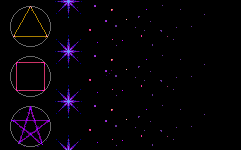 | JJBA: The games |
With a focus on N'doul
i'm going to start off with some context in case it's needed, but if you're reading this then i'm sure you're at least somewhat in the know.
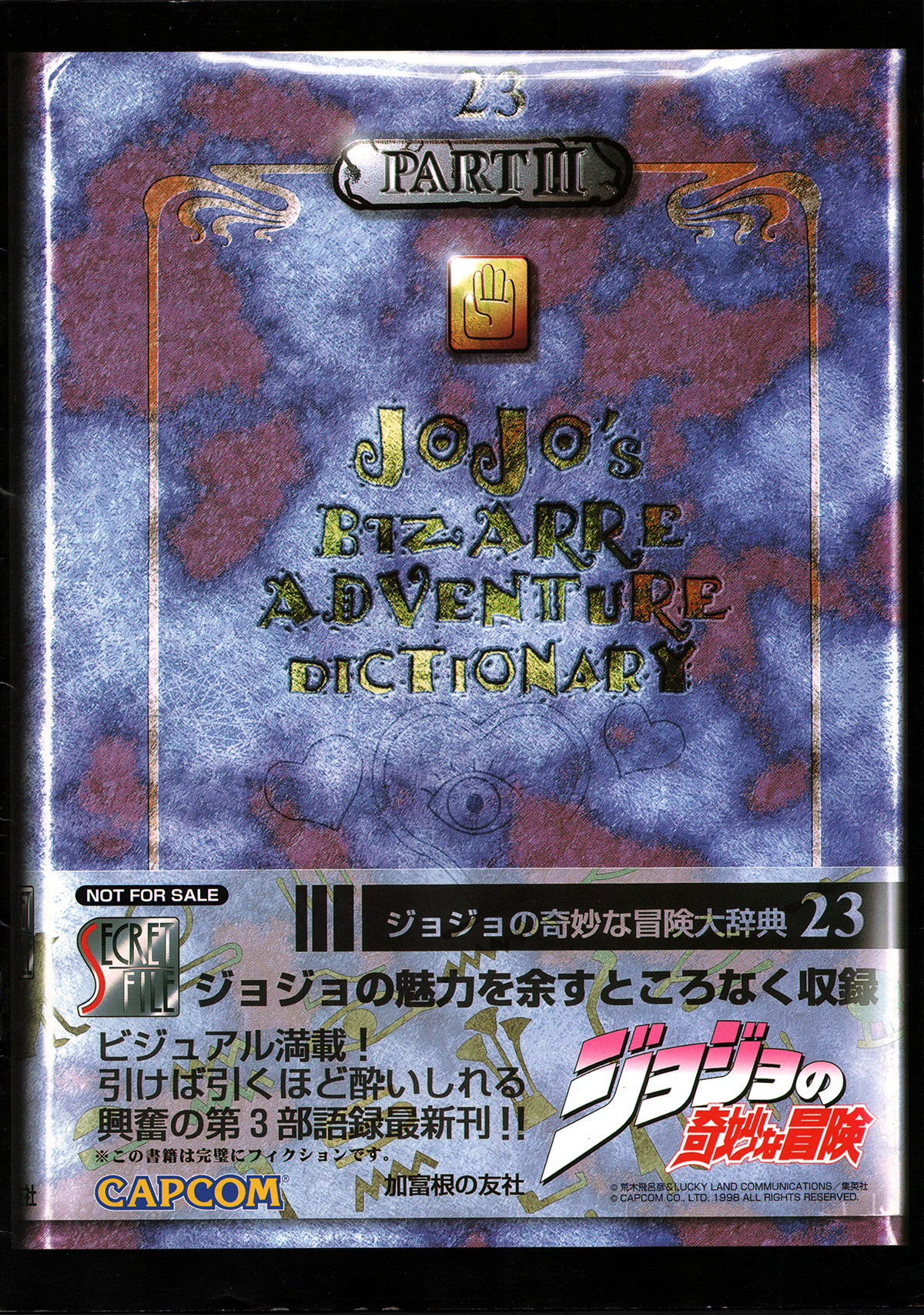
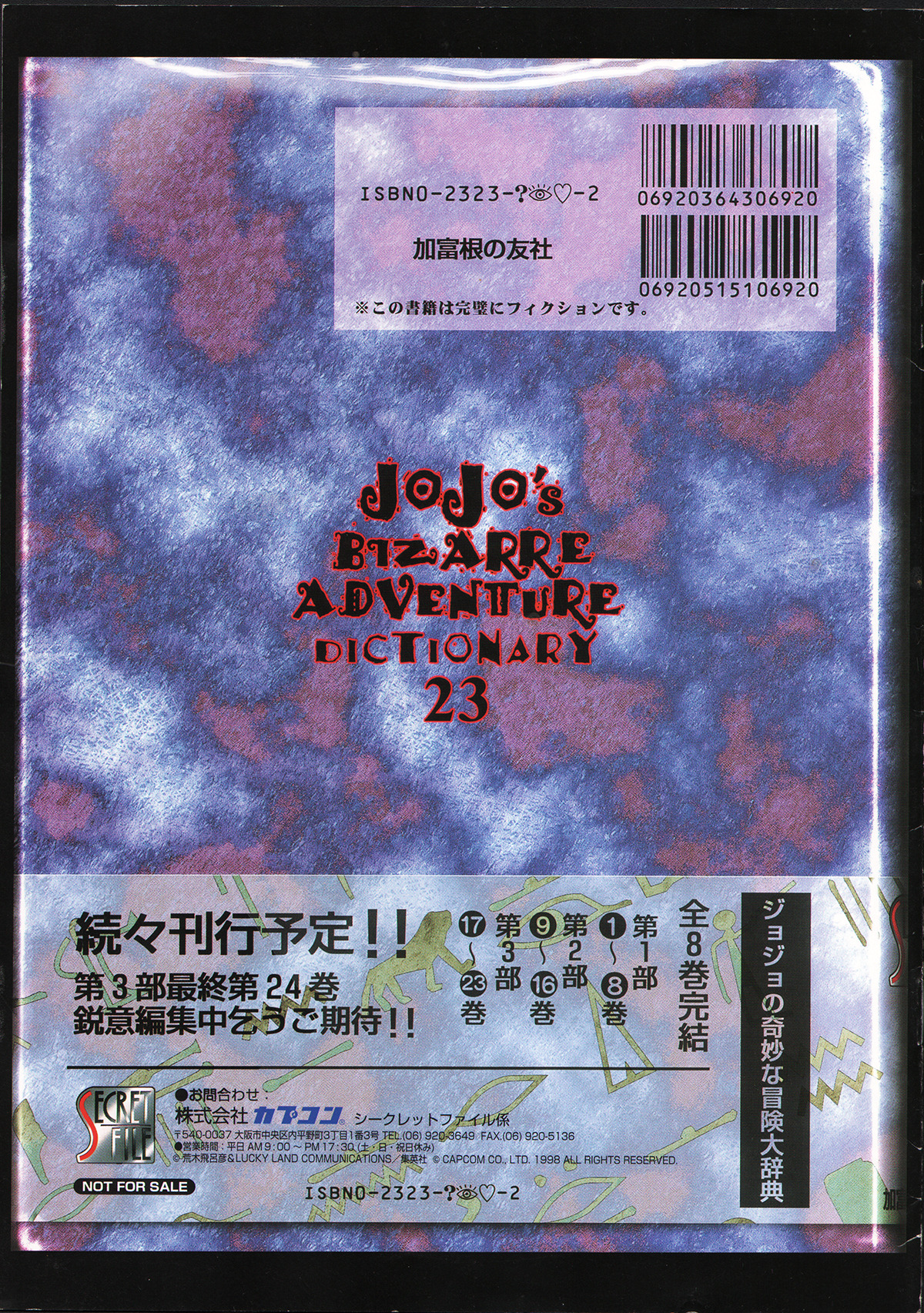
last autumn, i secured a physical copy of the JoJo’s Bizarre Adventure Heritage for the Future edition of CAPCOM Secret File. the secret files were a series of booklets, 27 in total and 12 pages each, published by CAPCOM between 1994-1999, about their various game productions. There’s a list of them here.
JoJo’s Bizarre Adventure, JoJo’s Venture, JJBA: Heritage For The Future… these games are all called JJBA, but, they’re all just part 3, Stardust Crusaders. i’m not sure how much i need to say about JJBA/Stardust Crusaders here, because you probably either know what it is or have (voluntarily or otherwise) absorbed information about it thru like, a collective unconscious or something.
why so many? why do people like this so much?? well, at face value, Stardust Crusaders is appealing for a lot of reasons.
Part 2 - Battle Tendency is a more Indiana Jones/Sherlock-esque narrative set in the late 30s. continues with a new Joestar generation, new abilities, jokes, respect for enemies, terror, and tragedies.
both of these have a smaller central cast (around 2-3 characters paired up at a time) and there are early themes here that the manga author, Hirohiko Araki, didn’t keep as he continued fleshing out the story and digging into what he was most passionate about exploring. he says himself that they were very much influenced by the era in which they were created and the limitations he felt were present in manga publishing. so, unlike its predecessors, most of the themes and ideas Stardust Crusaders explores serve as a stronger and more evident foundation to what you can expect for the rest of the parts. when i say foundation, i mean that the series evolves and expands greatly in its focus, but that with this part you get a more accurate peek of what's to come than you can with 1 and 2.
there are 8 complete parts in total, and a 9th has just begun. while all related, each part takes on different things– different protagonists, with different lives, exploring different aspects and exceptions to what’s been introduced already. a lot of fans might just stick to their favourite part and not continue with or have the same relationship to the other parts of the series, if they even read/watch them at all. the parts do, though, reference one another, sometimes in small ways, but typically plot-relevant ones, even tying up or bringing back plot points from much earlier, thereby expanding this immersive world. the scope is limited to the family, but their roles within and relationship to that family evolve and intensify in emotional complexity as the series continues. the series also shifts from shounen to seinen (switching too from Shonen to Ultra Jump) although it bridged this from the beginning, and even as a shonen, employed adult themes with older characters. in fact, if shounen is for “adolescent boys,” a slim few of the characters themselves fit this description, never mind the makeup of the fanbase.
the first JoJo’s Bizarre Adventure game was developed for the Super Famicon/SNES system by WinkySoft and released in 1993 as part point-and-click, part side-scroller RPG. here’s a promotional video for the famicom release pulled from JJBA publisher Shueisha's V Jump Premium video from 1993 detailing the making of their commercials
and if you’ve ever seen screencaps like these, that’s where they’re from
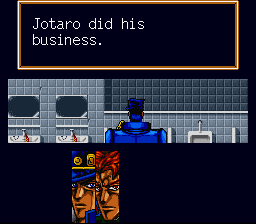
in 1998, Capcom made the JoJo’s Bizarre Adventure fighting game for the CP System III arcade boards and for the Playstation 1– in the west, this game was simply known as JoJo’s Venture. this was the final game made for the CP System III and the last proprietary system board Capcom produced before moving to the Sega Dreamcast-based Naomi platform (which, while an acronym– or technically a backronym, because– it was named after Naomi Campbell, apparently.)
in Jojo’s Venture, there’s also a mistranslation where Jotaro’s mom refers to Joseph Joestar as her uncle, rather than her father/Jotaro’s grandfather.
in 1999, that game was further revised and re-released into arcades and onto the Dreamcast. if you’re interested, here’s someone comparing the Dreamcast experience to the PS1, although iirc they don’t take into account elements like the loss of Story Mode.
when these games were brought to the US, they were at the time the only English-language JJBA material available, and so most people were primed for Stardust Crusaders before any other part of the series. as far as i’ve been able to confirm, the subbed and dubbed edition of the collected JJBA OVA would come later, in 2003-2005.
within this, i get a little lost about which assets belong to which edition, so forgive me. i only have a japanese version of the Dreamcast edition, but i’ve encountered the 1998 version of the game in the wild, at a dusty old arcade on the coast of Maine, USA. from what i understand, the first releases were both fairly simple , with major alterations made to the story in order to fit on these systems.
my favourite villain in Stardust Crusaders is N'doul, and that’s the whole reason i got the Secret File.
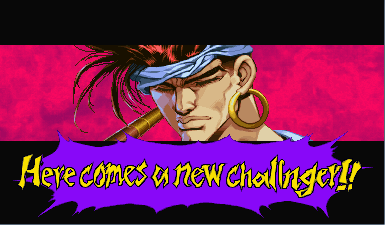
why is he my wife? you can read my guide for more information. otherwise i don’t fucking know it will take a million years to explain (and something i’ll do gladly) because it’s heavily based in context and framing, tonal shifts and such. it makes as much sense as anything else, which is none or a lot. this series is a circus and no matter who it is, your fave is the king of the clowns.
essentially, what got me is that N'doul is the first enemy the group fights after arriving in Egypt, their ultimate destination, which marks a tonal shift in Stardust Crusaders (whether you’re reading it, or watching it, or playing these linear games) that i find compelling. at the very least, he comes with implications of a shift, including in how each character reacts to the fight and the expanse of the fight itself in the desert, and what their enemies’ fealty to Dio means. in the manga, in the OVA, in the anime, in the games, Jotaro reacts the same way: first horror, and then admiration.
here’s N'doul in the booklet for the famicon release, along with some fellow freaks
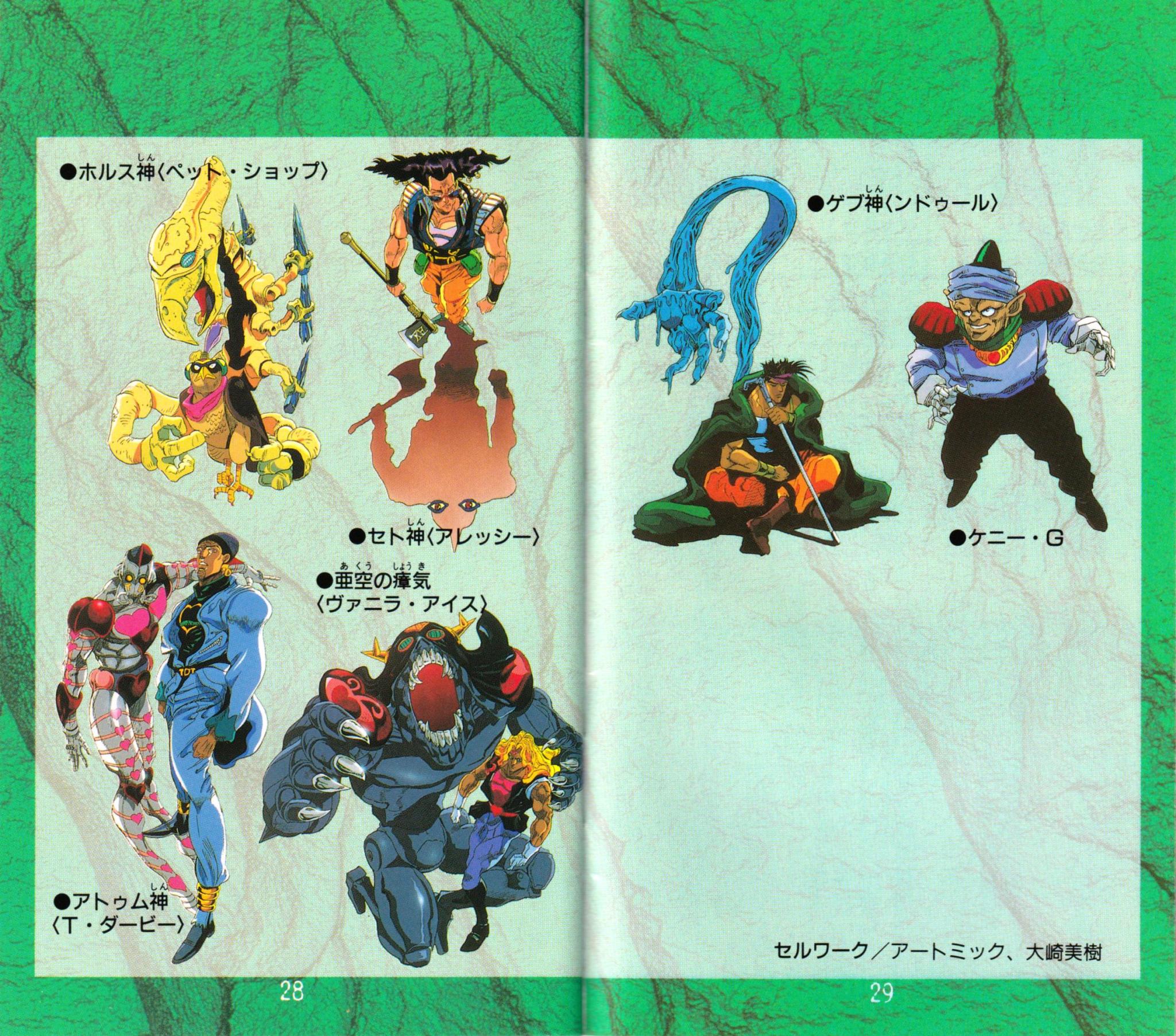
not only is he a honey, he’s objectively a honey compared to his squad.
while only the Crusaders are playable in the 1993 version, many of the enemies are playable in the next versions, including Dio, Anubis-possessed Polnareff, young (Battle Tendency) Joseph Joestar, Matrix Mode Kakyoin, Hol Horse…
here’s some shit that really cuts me up! N'doul, too, was originally planned as a playable character in Heritage for the Future, to the point of him having both sprites and artwork assets that are easily acquired via hacking, and concept art in the design files describing how he would fight.
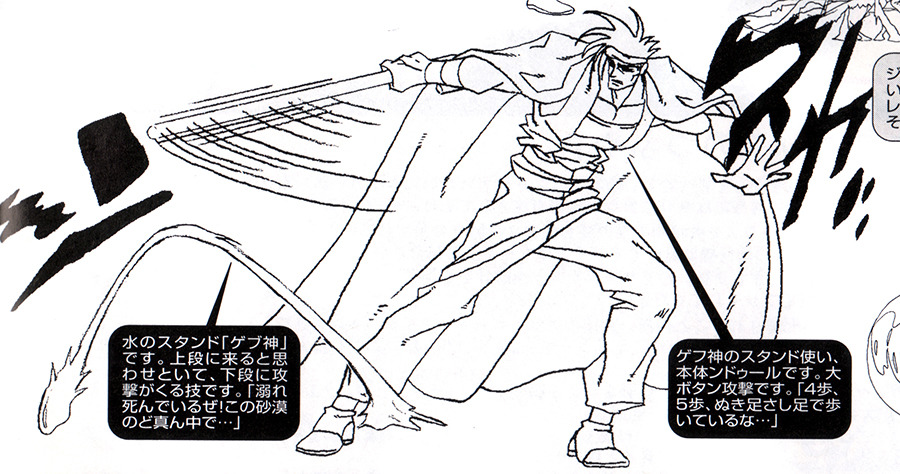
in Stardust Crusaders, there’s a stand user named Alessi who uses his powers to de-age his enemies, turning them into children. (it sucks mostly.) so basically anyone who might fight against Alessi gets a kid/younger version to match. in addition to the above concept art, there was also this
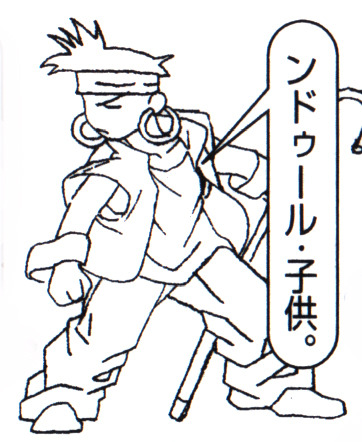
here are some of Geb's game sprites, as ripped by Magma MK-II
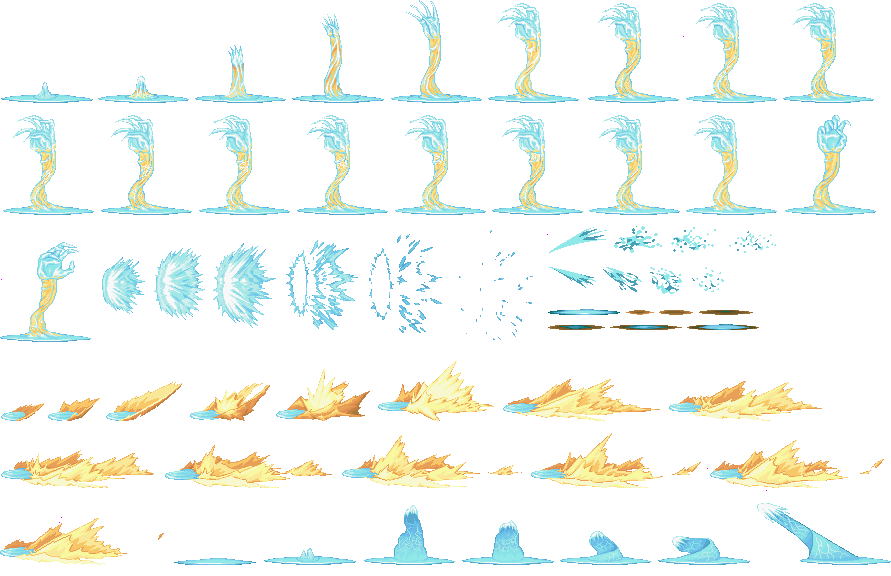
there’s more information and opinions about this on The Cutting Room Floor:
Due to the fact that many of his stand’s attacks are drawn with the reflection of the desert in it, it’s likely that he was kept a sub-boss so that Capcom didn’t need to redraw all of his stand’s sprites.you can see what the writer on TCRF meant by the added complexity in the water, potentially necessitating detailed edits that wouldn’t be required for other stands.
here’s someone’s playthrough. as you can see, his water-based attacks are mostly at ground level– you have to run/jump through the desert until you finally reach him, at which point you can kill him in one blow because he has only 5HP.
one fun fact is that in order to fight N'doul in story mode, you must play as Jotaro 😌 (in Oingo & Boingo’s Gallery Mode, you can fight him as any of the characters.)
however, if this is Super Story mode, it seems to be missing some of the background assets, parts of the cutscenes, and/or may even be a censored version (the censored versions crop up a lot in the Western releases.) i know for a fact i’ve played a different version: as you move through this boss fight, you see a downed helicopter and the body of its pilot. this follows the manga and anime plotline, where N'doul uses his water to attack them. The pilot was wearing a wristwatch with an alarm, and when it starts beeping, N'doul reacts harshly to the sound and destroys it– cutting off the man’s hand in the process.
here’s that moment in the manga,
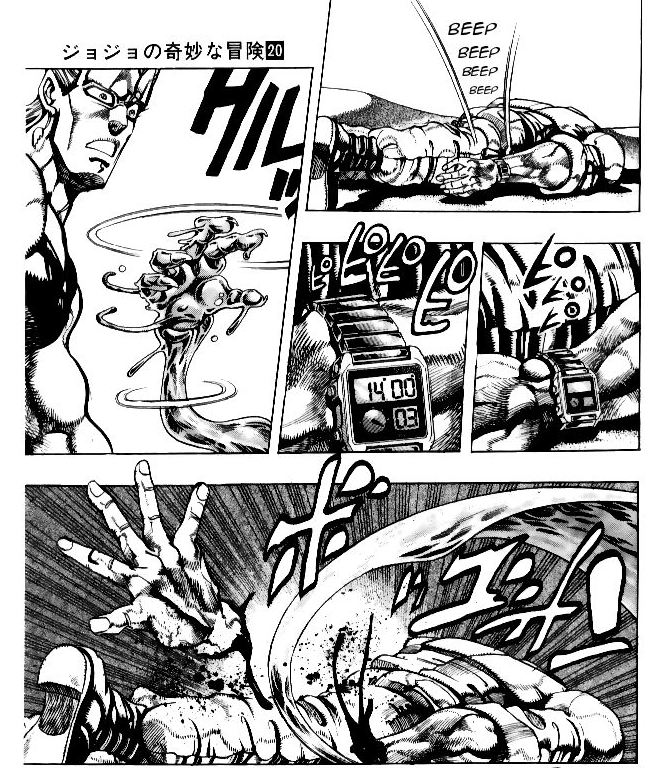
and here’s how that looks in the uncensored game,
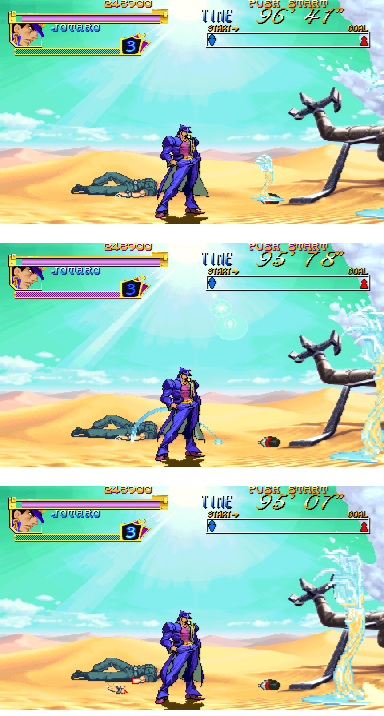
hell yeah.
N'doul’s theme in the game is also a straight up banger!!
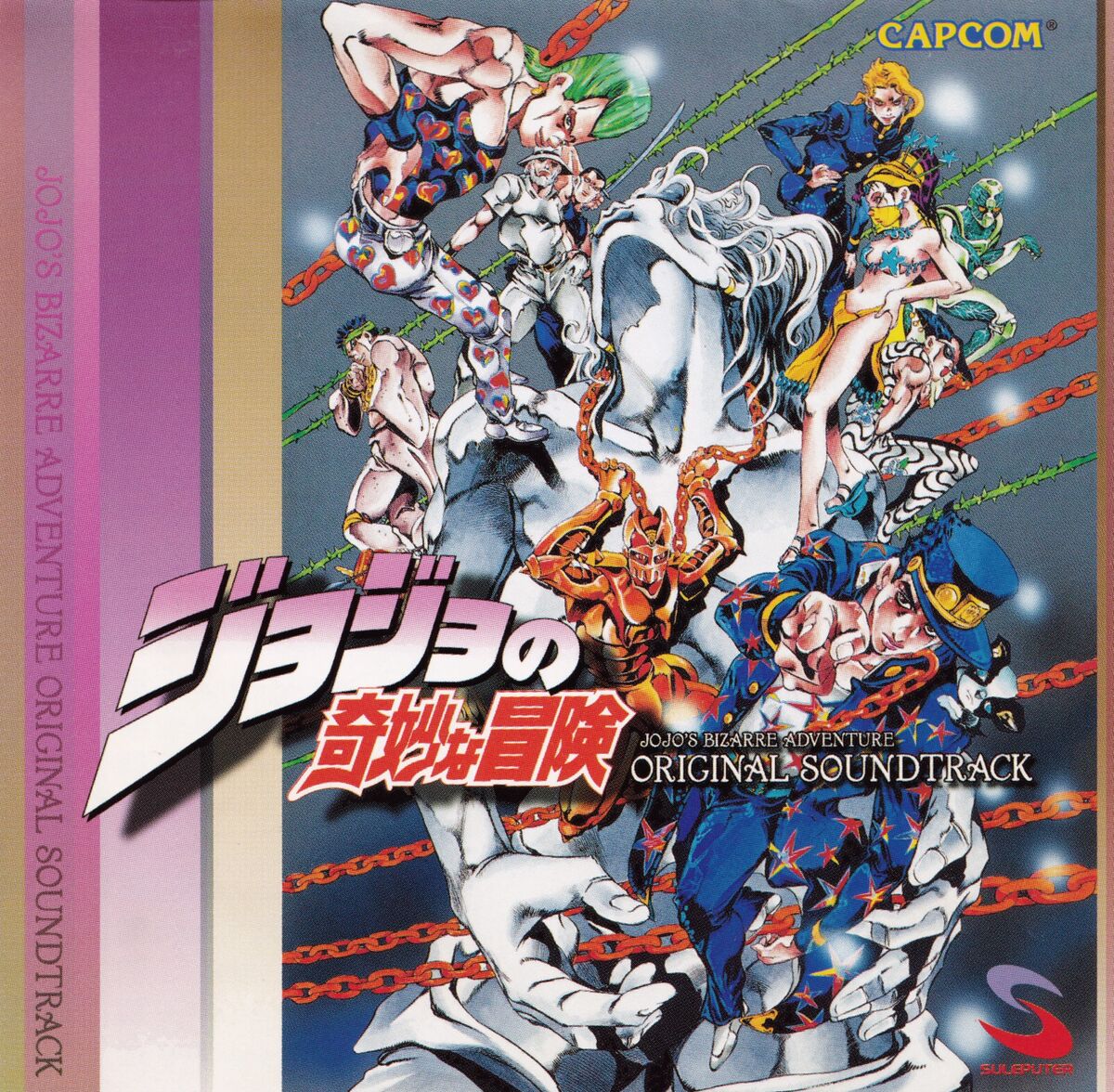 |
N'doul's Theme
Yuko Takehara, Setsuo Yamamoto |
in the mobile game JoJo Stardust Shooters (which ended in 2021) N'doul’s skills formally classify him as a Sniper. he’s a long-range stand user, patient, traveling from place to place in pursuit of his enemy, waiting for long periods of time until his prey is exactly where he needs them to be, and then takes the shot. then he will fall back, and because of the distance, the enemy (whether or not they can detect a fellow stand user) may not be able to track him. not all stand users can take advantage of distance; many stands are close-range only.
when we look at his stats, it’s clear that sniper suits him perfectly and differentiates him from other characters, including their iterations as playable characters in video game format:
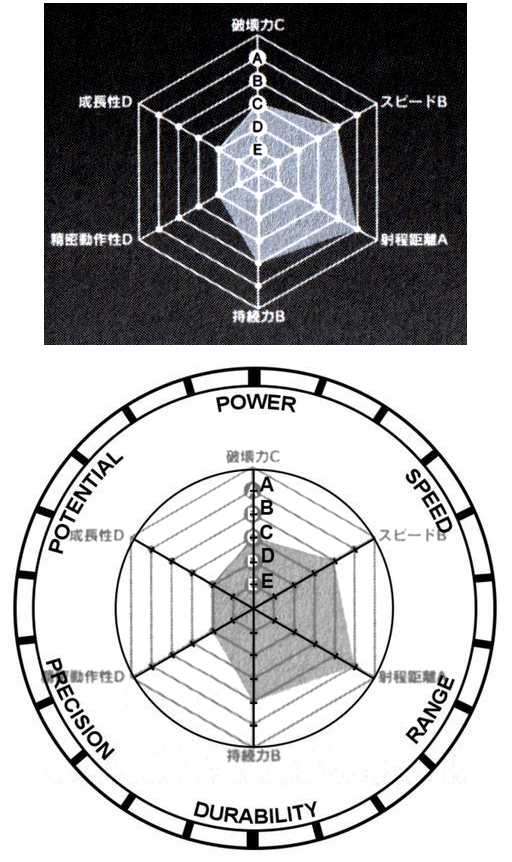
if i’m understanding correctly, we’re meant to interpret the low precision this way: being blind, he can’t 100% accurately choose his target through sight, only guessing at them through what he infers through sound. it’s weird though, because in the manga and anime we basically only see him nail the right person, decimating the main team quickly, and in his very first appearance, misses catching a fly in mid-air only to nail it by bringing his cane down on a pebble, shooting it into the air. physics puzzles should be a huge part of his fighting strategy!
not everyone likes to play as a sniper, and it might be especially confusing in a fighting game that’s so similar to the Street Fighter format– where incorporating a distance aspect to each stage might not be appropriate, ultimately. in 2015, n'doul was included in the roster for the Bandai-Namco joint Eyes of Heaven, developed by CyberConnect2 fr the PS3/PS.
 |  | |
| back | home |